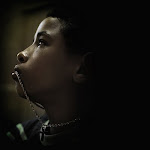This 1 millionth child refugee is not just another number," said Anthony Lake, executive director of Unicef, the UN agency for children. "This is a real child ripped from home, maybe even from a family, facing horrors we can only begin to comprehend. He added: "We must all share the shame, because while we work to alleviate the suffering of those affected by this crisis, the global community has failed in its responsibility to this child. We should stop and ask ourselves how, in all conscience, we can continue to fail the children of Syria. - Anthony Lake, UNICEF
The largest refugee crisis in 20 years prompted the UN to launch their largest appeal in history - a $5 billion emergency appeal. With half of all fleeing refugees children, and 75% of these under 11 years of age, the needs are staggering. More than 100,000 killed in the conflict, at least 7,000 of these children. Less than 20% of these children have received any kind of psycho-social support, and the Syrian regional response appeal is less than 40% funded - $1.9 billion short. 40,000 refugees have crossed the border this week alone. As Antonio Guterres said:
The Guardian's Mark Tran sheds light on the impacts of this crisis on children while Peter Beaumont discusses some of the latest thinking behind the international community's paralysis. What is behind this?
The youth of Syria are losing their homes, their family members and their futures...Even after they have cross the border to safety, they are traumatized, depressed and in need of hope.
Today's horrific tragedy at Ghouta, what appears to be the use of chemical weapons - nerve gas - by government forces, causing the excruciating death of what has been reported by Al Arabiyat as over 1,300 civilians - many of the victims children. The Syrian Army denies the claims. These grim facts reveal again children's real, raw vulnerability to disasters... as well as their resilience; and how little is being done to address this.
To drive this point home, no one can do it better than a child. Thanks to the Guardian and Bathoulahmed, a citizen journalist, for sharing precious Bilal's story with us. (Photo and story courtesy Bathoulahmed and the Guardianwitness which is calling for Syrian citizen journalists through September 1st.) May Bilal inspire you to do your part to support Syria's children.
Bilal, is 11 an 11 year old Syrian refugee from Qusayr. A few months ago, as he sat in a local the barber shop near his home, an explosion tore through his neighborhood shattering the glass of the shop. Flying glass hit Bilal straight in the eye, instantly blinding him in one eye. Since then, Bilal has been wearing a hat to avoid drawing attention to his eye. His mother told me that he has lost all his confidence. He is too embarrassed to face people because he is worried they would think he looks weird and laugh at him. But Bilal took of his hat and allowed me to see his face. He has the face of an angel.














